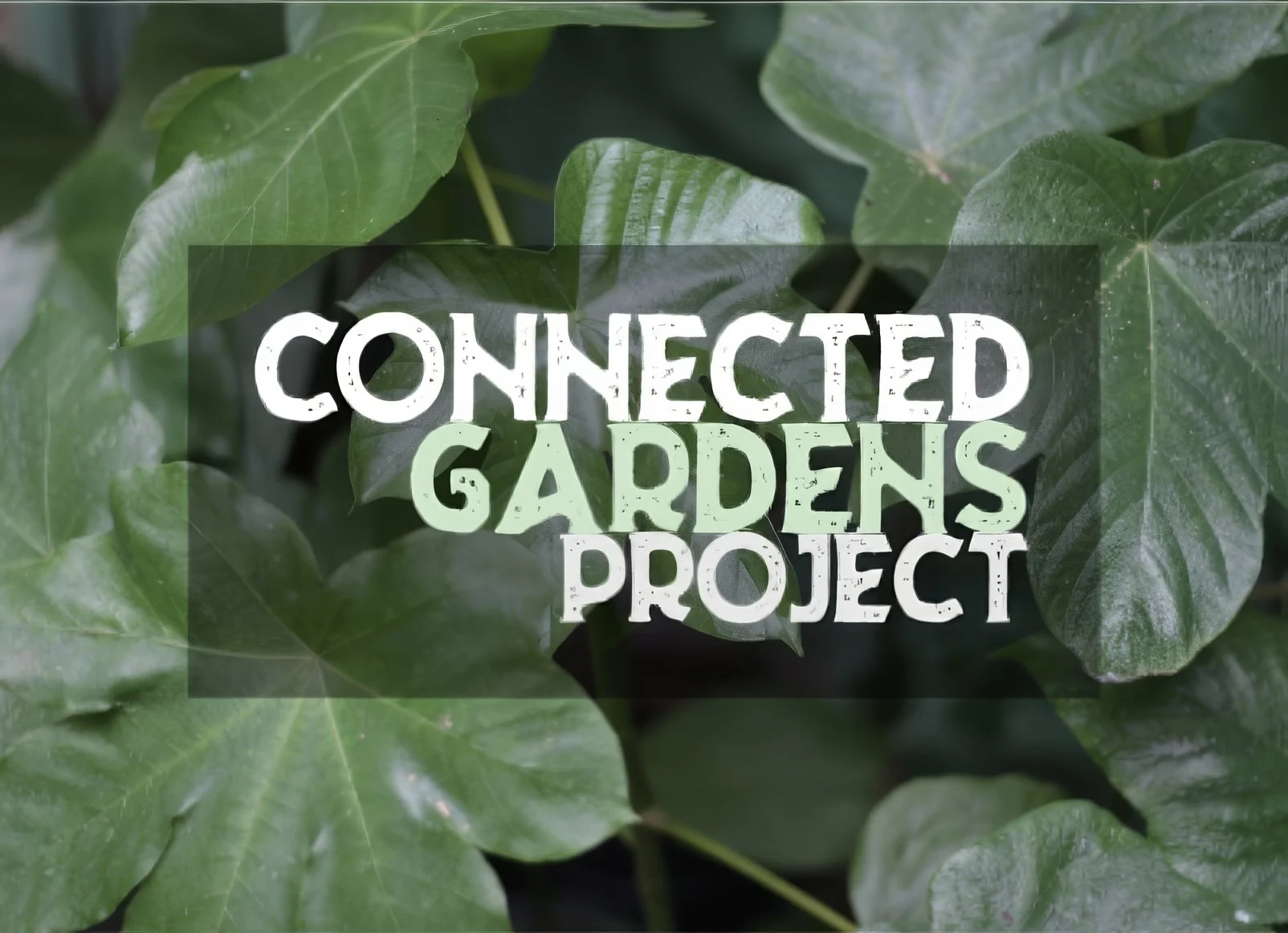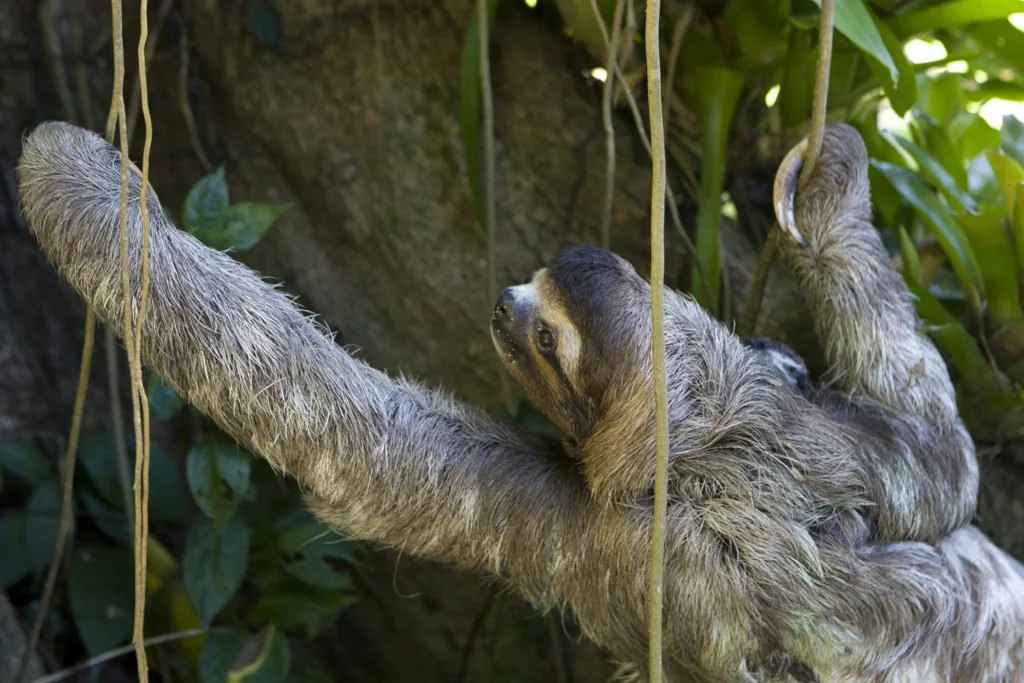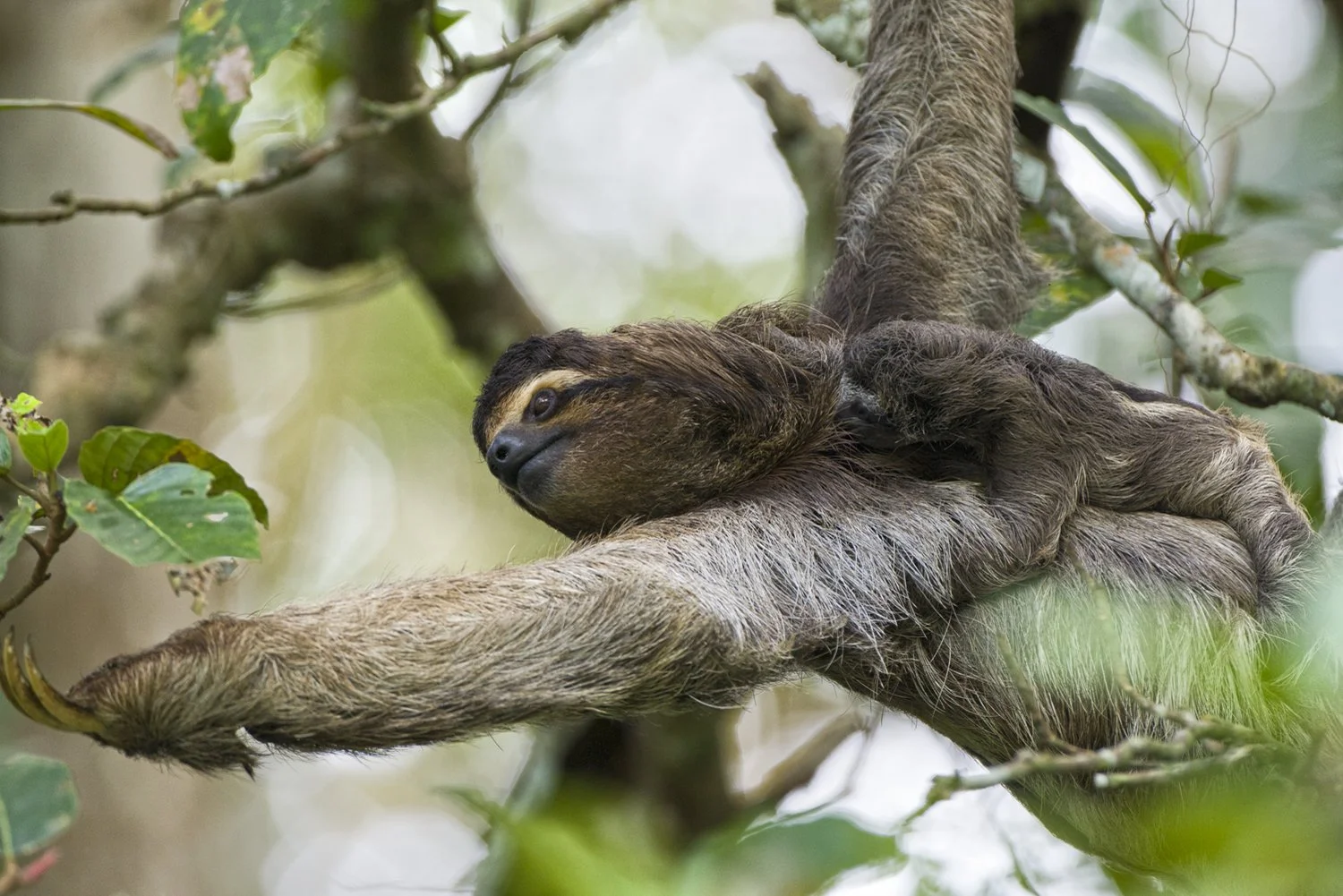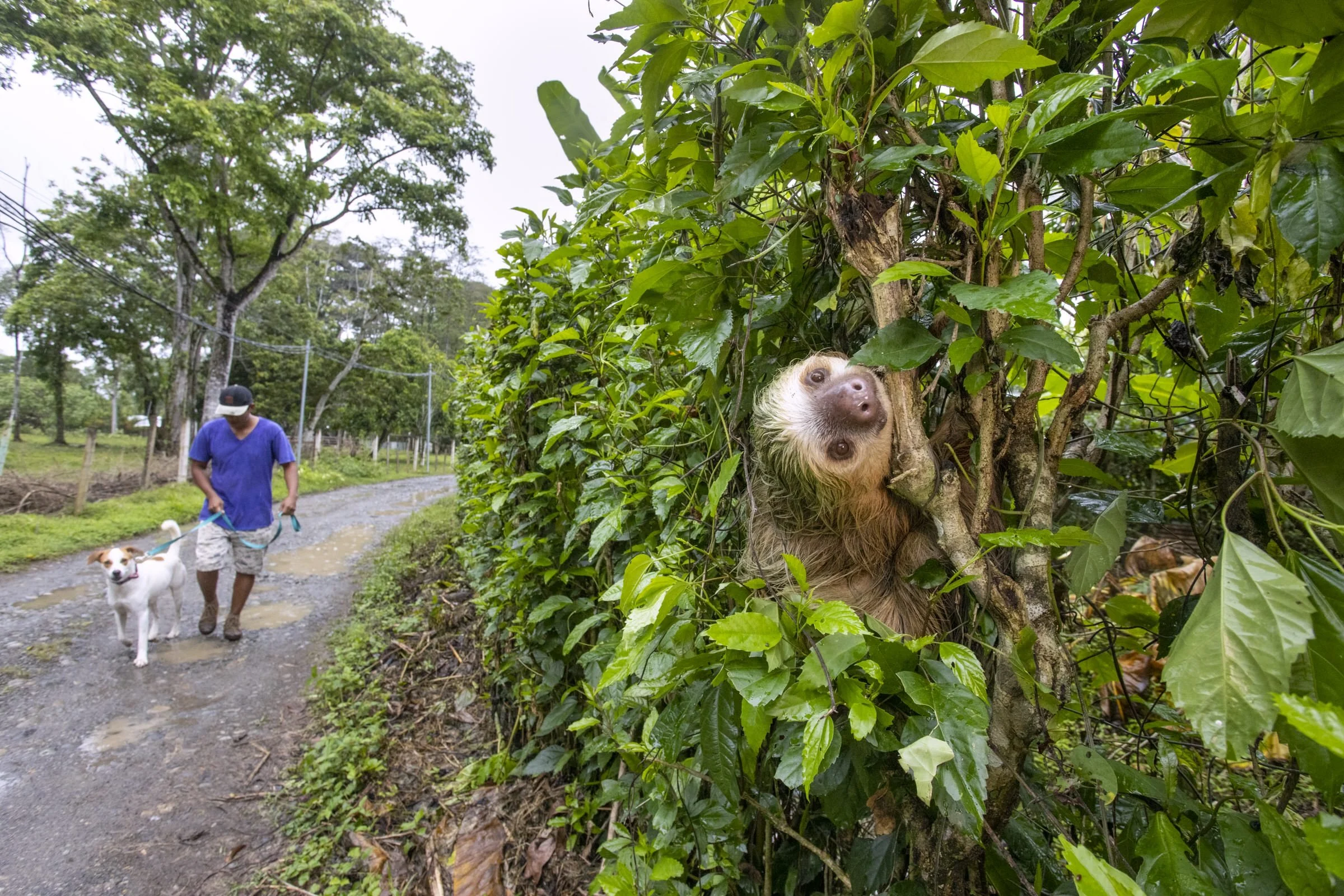

Our Work: Connected Gardens Project
Facilitating the peaceful coexistence of sloths and people.
The Connected Gardens Project is a scalable, community-led solution to the often-overlooked problem of rainforest “micro-fragmentation” and forest degradation. Unlike clear-cut deforestation, micro-fragmentation is the gradual thinning of forests caused by urban expansion - where buildings, roads, and other infrastructure create small but devastating canopy gaps that block the movement of arboreal species.
Because this type of forest loss is almost invisible to satellite monitoring, it often goes unreported. It is a quiet crisis unfolding tree by tree, property by property. Yet when thousands of these small land-use changes add up, they can fragment rainforests just as severely as large-scale deforestation, leaving sloths and other wildlife vulnerable.
The Connected Gardens Project tackles this challenge by reconnecting canopy gaps and working directly with landowners. Together, we are creating a growing network of biological corridors that restore ecological balance while empowering local communities to be part of the solution.

The Connected Gardens Project was born from a simple but powerful idea: if small actions can destroy connectivity, then small actions can also restore it.

Through a community-driven model, we harness the collective power of private landowner decisions.
We use a combination of targeted reforestation, community engagement and wildlife bridge installations to ensure that every property in a given area maintains canopy connectivity with neighbouring properties.
Community members become conservation partners, actively managing their land and contributing to the broader initiative. They receive training, serve as citizen scientists and are empowered to make informed decisions about the types of trees planted on their property, based on ecological benefits.
The cumulative impact of these actions across whole communities’ leads to increased habitat connectivity, greater wildlife abundance, and a significant reduction in human-wildlife conflict, demonstrating how individual efforts can drive large-scale environmental change.
Together with the community, we have:
Reconnected 8,000 hectares of fragmented rainforest
Installed 370 canopy bridges
Planted 12,000+ native trees
Achieved an 82% reduction in wildlife conflict in target areas
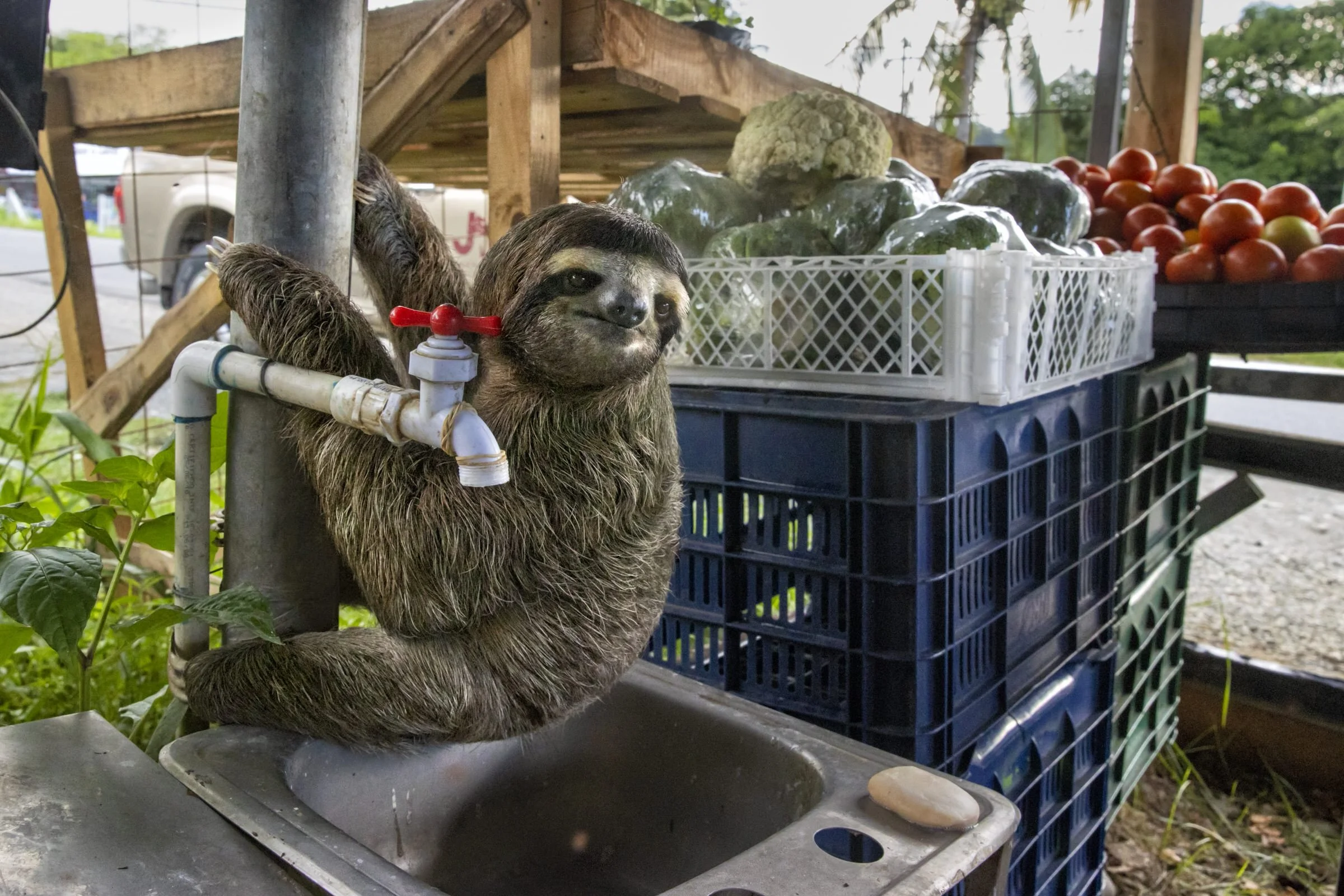

Over the next 10 years, the 30 species of native trees that we have planted over an area of 30 km² will absorb over 12,500 tonnes of CO₂ from the atmosphere every single year.
Donate Today
Let’s make the world a better place for sloths.
100% of your gift protects sloths, and we will show you the difference you make with impact updates, photos, and GPS coordinates from the field.

